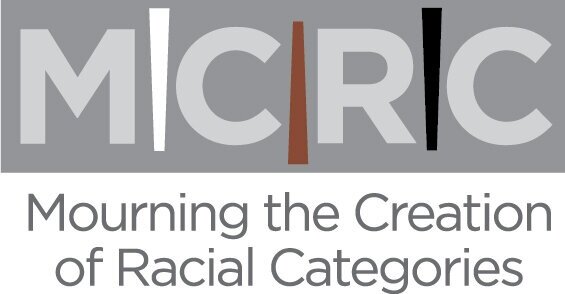Which question does Grouping B answer? (answer key at bottom of page)
1. In the United States, how do we determine who is black and who is white?
2. How did white become the free and black the enslaved?
3. White is “the standard.” What does that mean?
4. Why White?
5. When words are inadequate, how can the arts help us feel the emotions of race?
6. If you do not identify as black or white, where do you fit into the conversation about race?
7. How did white become the pure category and black the contaminating one?
Artwork by J. Keppler, 1878. Prints and Photographs Division, Library of Congress.
the idealized family
This model of what a family should look like entered societal consciousness around 1860 and was idealized as a White-classified married couple with a working father, a home-keeping mother, and two children. At this time, Black-classified families were still being broken apart by enslavement, Native Americans were being removed from their lands and communities, and Mexican lands and the peoples on them were being appropriated by the United States.
i let go
The idea of how a family should look was so powerful that if an unmarried, White-classified woman became pregnant, she was damaging her White status. Before their pregnancies could show, these women would leave town and stay at a home for unwed mothers for six months, then give their babies up for adoption soon after birth. Between 1940 and the mid-1980s, 1.5 million White-classified women surrendered their babies for adoption to “more deserving” White-classified married couples who could not have their own childrenThis artwork and poem below give imagery and voice to how the White ideal was tragically enforced and experienced. The poem recounts the moments of surrender:
I slipped into a familiarity. A state of only me, her--us in our sovereignty. But they called me out of this place into bearing, into birthing. More. You have to push more. I moaned that it hurt and they persisted that it was supposed to hurt. So, I pressed until all the red was out of me. And at the end of my red was my baby tangled in thick black hair. Too much in her— Not right, not right. Can I hold her? Let me hold her. Not now, but we are professionals. We have seen this before. “A million times before.” So, I let them take her. I let go and hoped that’s what a mother was supposed to do (Poem “Not White Enough” by India Sada).
Artwork by Gabrielle Siekman
“Canau pour Pecherles Perles.” Histoire Naturelle Des Indes: The Drake Manuscript in the Pierpont Morgan Library.
scientists discredit
Many accounts tell of African peoples who could dive 90 or more feet deep and hold their breath for nine or more minutes.
Yet, White-classified scientists and other experts defined swimming as an irrational activity, succeeded only by people with animal-like qualities. Deep-sea diving was viewed as an activity of a ferocious, unsophisticated people who splashed and thrashed around in the water. Moreover, White-classified religious leaders deemed swimming immoral because it was typically done nude.
Anonymous, c. 1810 –1815. “Les Nageurs (The Swimmers),” from the series Le Supreme Bon Ton, No. 15. Martinet, Paris. Wikipedia Commons, public domain.
the swimmers
Scientists and experts set standards that allowed White-classified people to define themselves not as inferior, but as too superior. White-classified scientists declared that people in the White category were too rational and sophisticated to engage in the African divers’ kind of swimming. White idealism defined the standard for swimming as consisting of controlled, measured, and precise techniques practiced while wearing clothing.
Artwork by Sherman Parnell and Poem by India Sada
“A Psalm for the Enslaved Divers” (Part 1)
(speaking to the water)
you know my name;
now carry me down deep
Artwork by Sherman Parnell and Poem by India Sada
(Part2)
you know my need to fulfill His reap
a thousand times i’ve scraped this floor
to plunder pearls and wrecked ships of war
have you seen them?
be kind and show me where they are
it is only for His precious things that i disturb this far
Artwork by Sherman Parnell and Poem by India Sada
(Part 3)
and please don’t wring my head, my chest
this body won’t be salvaged if sunken with the rest
Poem by India Sada
answer key
grouping b answers question 3
White is "the standard." What does that mean?








